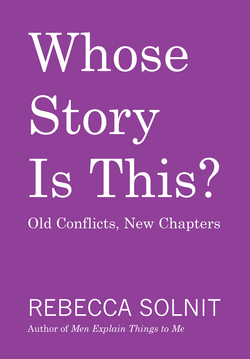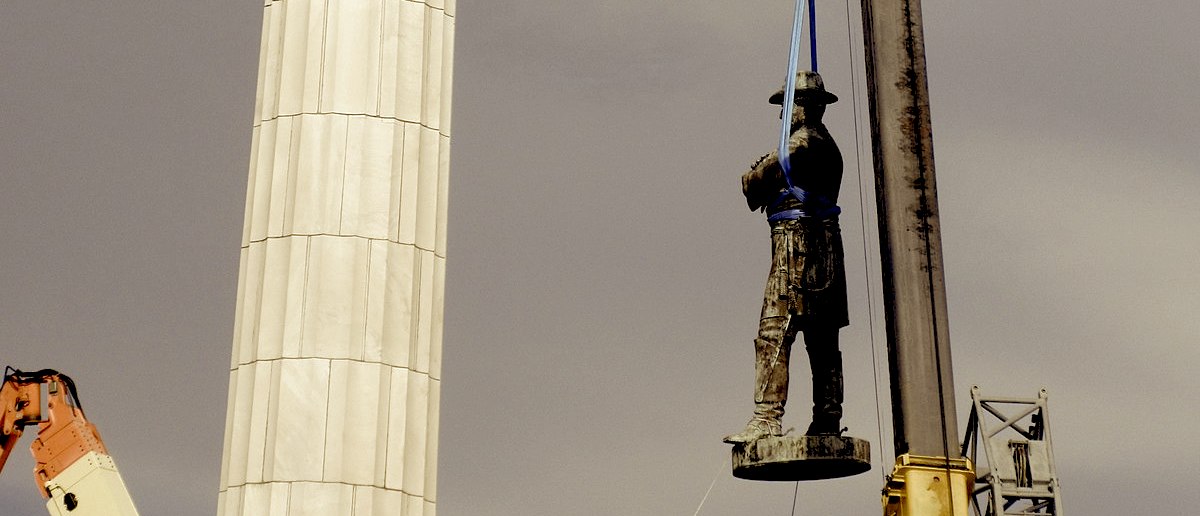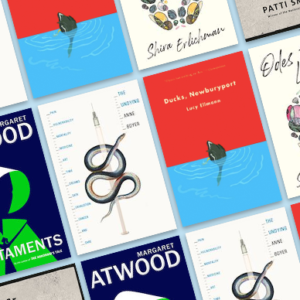We are building something immense together that, though invisible and immaterial, is a structure, one we reside within—or, rather, many overlapping structures. They’re assembled from ideas, visions and values emerging out of conversations, essays, editorials, arguments, slogans, social-media messages, books, protests, and demonstrations. About race, class, gender, sexuality; about nature, power, climate, the interconnectedness of all things; about compassion, generosity, collectivity, communion; about justice, equality, possibility. Though there are individual voices and people who got there first, these are collective projects that matter not when one person says something but when a million integrate it into how they see and act in the world. The we who inhabits those structures grows as what was once subversive or transgressive settles in as normal, as people outside the walls wake up one day inside them and forget they were ever anywhere else.
The consequences of these transformations are perhaps most important where they are most subtle. They remake the world, and they do so mostly by the accretion of small gestures and statements and the embracing of new visions of what can be and should be. The unknown becomes known, the outcasts come inside, the strange becomes ordinary. You can see changes to the ideas about whose rights matter and what is reasonable and who should decide, if you sit still enough and gather the evidence of transformations that happen by a million tiny steps before they result in a landmark legal decision or an election or some other shift that puts us in a place we’ve never been.
*
I have been watching this beautiful collective process of change unfold with particular intensity over the past several years—generated by the work of countless people separately and together, by the delegitimization of the past and the hope for a better future that lay behind the genesis of Occupy Wall Street (2011), Idle No More (2012), Black Lives Matter (2013), Standing Rock (2016), #MeToo (2017), and the new feminist surges and insurgencies, immigrant and trans rights movements, the Green New Deal (2018), and the growing power and reach of the climate movement. Advocacy of universal healthcare, the elimination of the Electoral College, the end of the death penalty, and an energy revolution that leaves fossil fuels behind have gone from the margins to the center in recent years. A new clarity about how injustice works, from police murders to the endless excuses and victim-blaming for rape, lays bare the machinery of that injustice, makes it recognizable when it recurs, and that recognizability strips away the disguises of and excuses for the old ways.
*
My formative intellectual experience was, in the early 1990s, watching reactions against the celebration of the quincentennial of Columbus’s arrival in the Americas and the rise in visibility and audibility of Native Americans that radically redefined this hemisphere’s history and ideas about nature and culture. That was how I learned that culture matters, that it’s the substructure of beliefs that shape politics, that change begins on the margins and in the shadows and grows toward the center, that the center is a place of arrival and rarely one of real generation, and that even the most foundational stories can be changed. But now I recognize it’s not the margins, the place of beginnings, or the center, the place of arrival, but the pervasiveness that matters most.
It’s easy now to assume that one’s perspectives on race, gender, orientation, and the rest are signs of inherent virtue, but a lot of ideas currently in circulation are gifts that arrived recently, through the labors of others.We live inside ideas. Some are shelters, some are observatories, some are windowless prisons. We are leaving some behind and entering others. At its best, in recent years, this has been a collaborative process so swift and powerful that those paying closest attention can see the doors being framed, the towers arising, the spaces taking shape in which our thoughts will reside—and other structures being knocked down. Oppressions and exclusions so accepted they’re nearly invisible become visible en route to becoming unacceptable, and other mores replace the old ones. Those who watch with care can see the structure expanding so that some of those who object or ridicule or fail to comprehend will, within a few years, not even question their lives inside those frameworks. Others try to stop these new edifices from arising; they succeed better with legislation than with imagination. That is, you can prevent women from having access to abortions more easily than you can prevent them from thinking they have the right to an abortion.
You can see change itself happening, if you watch carefully and keep track of what was versus what is. That’s some of what I’ve tried to do over the years, in this book and others: to see change and understand how it works and how and where each of us has power within it. To recognize that we live in a transformative time, and that this process will continue beyond what we can now imagine. I’ve watched the arising of new ways of naming how women have been oppressed and erased, heard the insistence that the oppression and erasure will no longer be acceptable or invisible. Often, even things that impacted me most directly became clearer through this process, carried out by many of us together. I’ve seen many writers express versions of the same general principles, seen the ideas catch on, spread, become incorporated into conversations about what is and should be, and sometimes I’ve been one of those writers. To see it unfolding is exhilarating and sometimes awe-inspiring.
*
This is a time in which the power of words to introduce and justify and explain ideas matters, and that power is tangible in the changes at work. Forgetting is a problem; words matter, partly as a means to help us remember. When the cathedrals you build are invisible, made of perspectives and ideas, you forget you are inside them and that the ideas they consist of were, in fact, made, constructed by people who analyzed and argued and shifted our assumptions. They are the fruit of labor. Forgetting means a failure to recognize the power of the process and the fluidity of meanings and values.
*
I heard Gerard Baker talk recently. He’s Mandan-Hidatsa, from the Fort Berthold reservation in North Dakota, and he spoke about his work in the national parks to change the way Native people were present, literally, as visitors and employees, as well as in structures, signs, language, and other representations. Immensely tall, enormously funny, a brilliant raconteur, he told us how he rose from doing janitorial work to being superintendent at two national monuments he’d told his family he’d never work at, Little Bighorn Battlefield (which was, until 1991, named Custer Battlefield National Monument) and Mount Rushmore. At both parks he changed what the place meant and whom it was for. At one he got death threats for doing so; some people intend to keep the old versions in place by violence.
Recalling what he said, remembering my own early 1990s reeducation about Native American presences in the United States, contemplating the conversations we have now and those we don’t, I wanted to yell at some of the people I run into, “If you think you’re woke, it’s because someone woke you up, so thank the human alarm clocks.” It’s easy now to assume that one’s perspectives on race, gender, orientation, and the rest are signs of inherent virtue, but a lot of ideas currently in circulation are gifts that arrived recently, through the labors of others.
Remembering that people made these ideas, as surely as people made the buildings we live in and the roads we travel on, helps us remember that, first, change is possible, and second, it’s our good luck to live in the wake of this change rather than asserting our superiority to those who came before the new structures, and maybe even to acknowledge that we have not arrived at a state of perfect enlightenment, because there is more change to come, more that we do not yet recognize that will be revealed.
There’s a beautiful passage Black Lives Matter cofounder Alicia Garza wrote in the wake of the 2016 election:
This is a moment for all of us to remember who we were when we stepped into the movement—to remember the organizers who were patient with us, who disagreed with us and yet stayed connected, who smiled knowingly when our self-righteousness consumed us. Building a movement requires reaching out beyond the people who agree with you. I remember who I was before I gave my life to the movement. Someone was patient with me. Someone saw that I had something to contribute. Someone stuck with me. Someone did the work to increase my commitment. Someone taught me how to be accountable. Someone opened my eyes to the root causes of the problems we face. Someone pushed me to call forward my vision for the future. Someone trained me to bring other people who are looking for a movement into one.
Garza acknowledges that each of us had an education and implies that none of our educations is finished. At its best, at its most beautiful, this is a creative process. At its worst, it’s policing by those who are inside aimed at those who are not. Sometimes they’re not inside because they have not yet found the doorway or they hear condemnation rather than invitation issue from the doorstep. But people also forget that this is a historical process rather than ideas that have always been self-evident, and some have had more access to these ideas than others. I find now that most people forget the immense work done around race and gender and sexuality and prisons and power, and that it was, in fact, work—intellectual labor to reject the assumptions built into language, the forces that lift some of us up and push others down, to understand and describe the past and the present and propose new possibilities for the future.
*
Amnesia means that people forget the stunning scope of change in recent decades. That change is itself hopeful, as evidence that people considered marginal or powerless—scholars, activists, people speaking for and from within oppressed groups—have changed the world. For example, an unfortunate consequence of the relative success of what got called #MeToo has been to imagine that something began at that point. This obscures the extraordinary feminism of the five years before, including the work of campus anti-rape activists and the responses to the rape-torture-murder of Jhoti Singh in New Delhi and the Steubenville case.
The watershed called #MeToo in October 2017 was not that people spoke; it’s that other people listened.Even the surge of public response to those atrocities may obscure, as I wrote in one of the essays in this book, that the reason women’s stories were able to be heard and generated consequences was because of what came before: the long, slow work of feminism to change consciousness and to put women—and men who regarded women as human beings endowed with inalienable rights and the capacity to say things that mattered—in positions of power. And the rise of new generations who were less bound by the old assumptions and denials. To change who tells the story, and who decides, to change whose story this is.
The watershed called #MeToo in October 2017 was not that people spoke; it’s that other people listened. Many had spoken up before—the victims of the gymnastics doctor, the victims of R. Kelly—some over and over, and their testimony was ignored or disregarded. So #MeToo was not the beginning of women speaking up, but of people listening, and even then—as we’ve seen in the case of Christine Blasey Ford, testifying against Supreme Court nominee Brett Kavanaugh—continuing to be rendered inconsequential. Just as Gerard Baker did, for changing the story about the Battle of Little Bighorn, Blasey Ford received death threats. One measure of how much power these voices and stories have is how frantically others try to stop them.
*
The title essay of my new anthology, Whose Story Is This?, is about the struggle of new stories to be born, against the forces that prefer to shut them out or shout us down, against people who work hard at not hearing and not seeing. A far, far too common response to #MeToo has been to bemoan that men feel less comfortable in their workplaces, which springs first of all from a habit of not just valuing male comfort more but centering attention on it. Similarly, the advancement of people of color is framed, by some, as a loss for white people, having to make room, compete on equal terms, or just coexist with difference. It’s about who matters.
Comfort itself is often invoked as though it were a right of the powerful. Last June, CBS This Morning tweeted, “Border Patrol has reached out and said they are ‘very uncomfortable’ with the use of the word cages. They say it’s not inaccurate and added that they may be cages but people are not being treated like animals.” So a cage should not be called a cage, because the discomfort of people in cages is overshadowed by the discomfort of people who put them in cages having cages be called by their true names.
Similarly, racists have objected to being called racists of late, and well-housed people have talked about how seeing the homeless upsets them. “White nationalist, white supremacist, Western civilization—how did that language become offensive?” said Republican congressman and white supremacist Steve King. Comfort is often a code word for the right to be unaware, the right to have no twinges of one’s conscience, no reminders of suffering, the right to be a “we” whose benefits are not limited by the needs and rights of any “them.”
In the name of such comfort, part of the population in the United States and in Europe is moving backward, trying to take up residence in the wreckage of white supremacy and patriarchy, perhaps convinced that there is no shelter that shelters us all, that they need to be in places where whiteness and maleness dominate, that scarcity governs the world and hoarding is a necessary strategy. I said “alarm clocks,” and I’ve been calling this process awakening. Those are value-laden terms, but to become more aware of others unlike you and of the systems that regulate the distribution of power and audibility and credibility and value is to awaken.
The opposite is falling into the nightmare that is also such a powerful force in this time, the nightmare of white supremacy and patriarchy, and the justification of violence to defend them. The permission given by the resurgence of white supremacy and misogyny is to not feel, not value, not extend oneself to solidarity with or even awareness of others, to be unaware, unconcerned, uninformed, unconnected. Not to wake up, not to hear the alarm clocks. You can see that this is often experienced as a giddy liberation from the obligation to be “politically correct,” that is, to treat others as people having value and rights, including the right to tell their version of the story.
I call it a nightmare because it is delusional in its fears and its fantasies of grandeur and its intention of making decades of changes evaporate, of shoving new ideas back into the oblivion from which they emerged, and returning to a past that never existed. And because it turns truth from something to be determined by the evidentiary processes of science or investigative journalism or other empirical means into something decided by threat and force. Truth is whatever they want it to be, and as their wants shift, it bloats and billows and fades and flaps in the wind. To make a death threat against a storyteller is to believe that might makes right and even fact.
Despite the backlashes—or because they are backlashes—I remain hopeful about this project of building new cathedrals for new constituencies. Because it is well under way. Because the real work is not to convert those who hate us but to change the world so that haters don’t hold disproportionate power and so that others are not sucked into the nightmare. Because the rising generation is better, overall, and because demographics are creating a United States in which nonwhite people will be the majority in a quarter century, because the pace of backlash-exclusion cannot keep up with the rate of diversification, because our stories are more accurate when it’s about the sources of poverty or the reality of climate change or the equality of women, because our stories invite more people in, because these stories invite us to be more generous, more hopeful, more connected, because so much has changed from the dank world I was born into, in which male superiority and white supremacy were only just beginning to be challenged and new languages about the environment, sexuality, power, connection, and pleasure were just being born.
__________________________________________

Adapted from the introduction to Whose Story Is It?, courtesy Haymarket Books. Copyright 2019 Rebecca Solnit.


